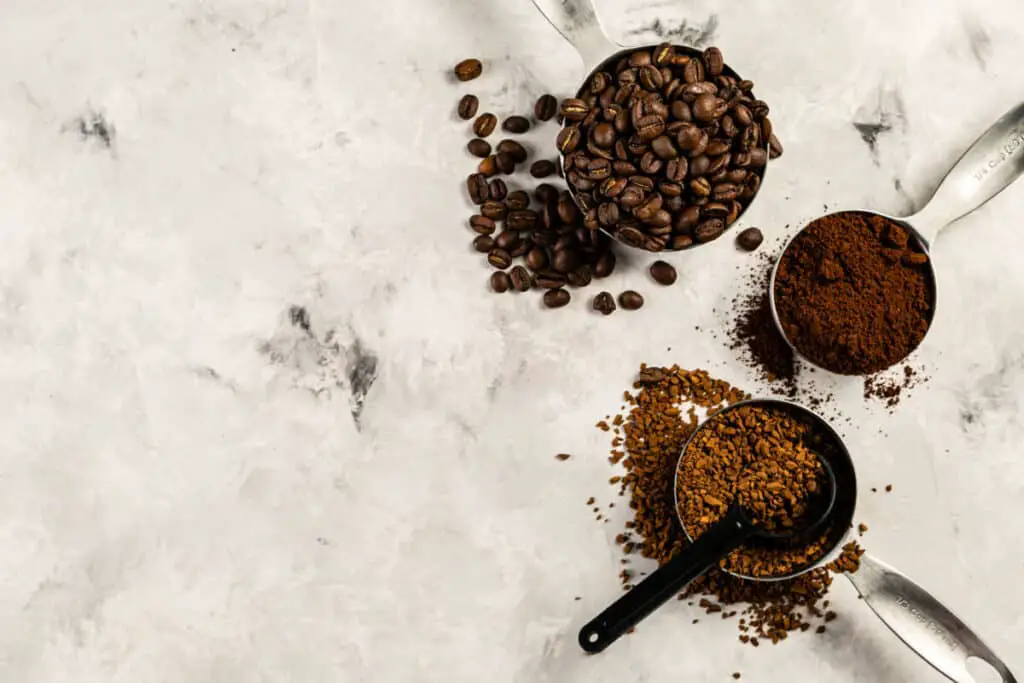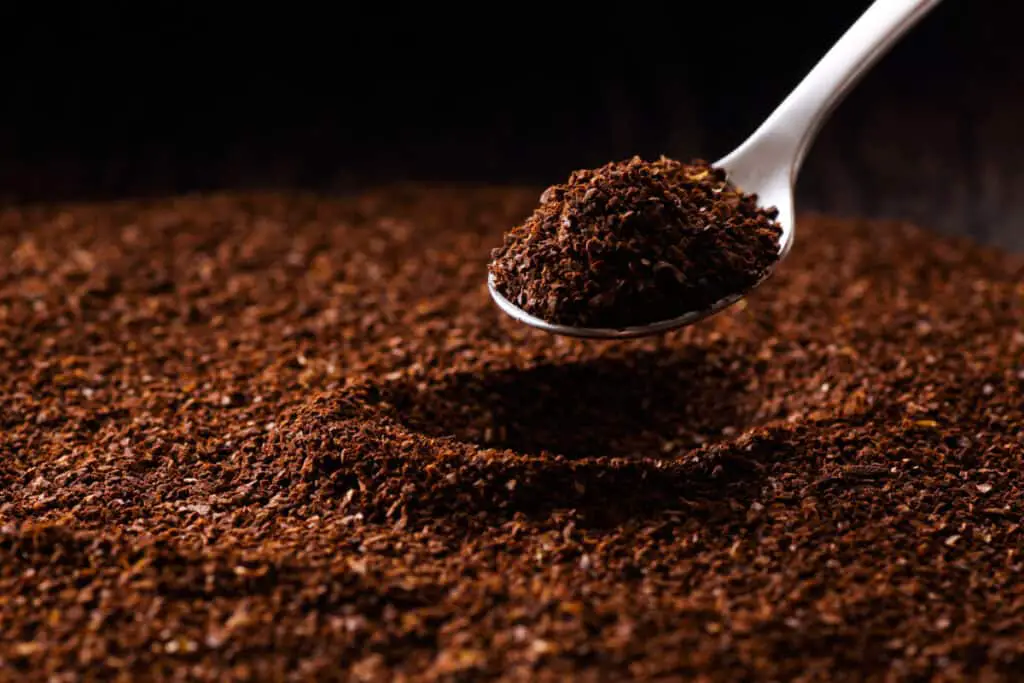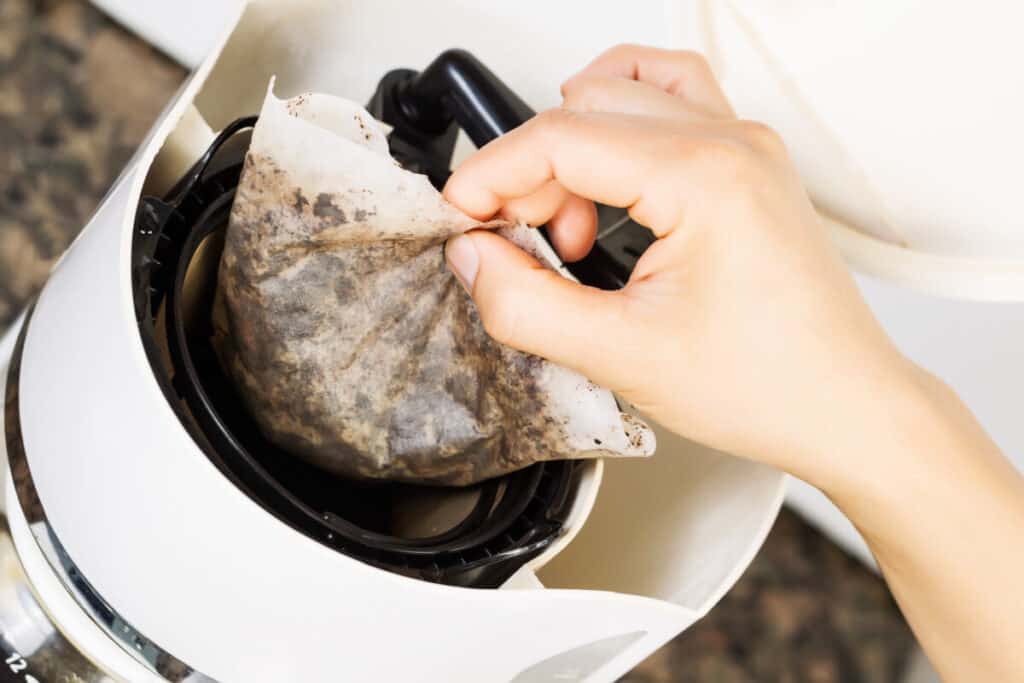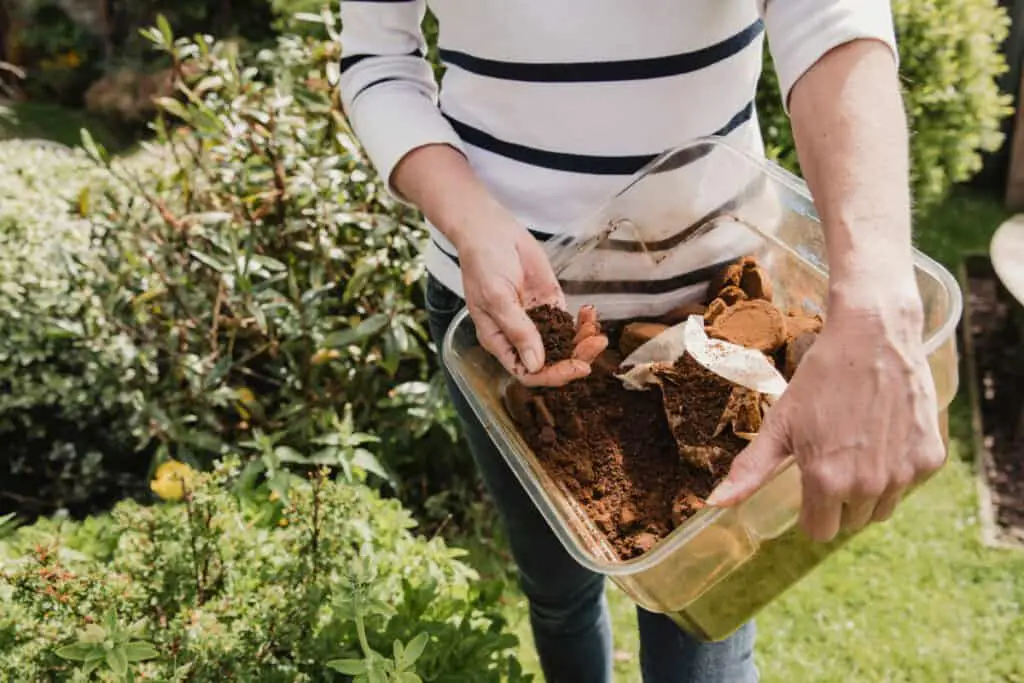This post contains affiliate links.
Have you ever come across an old bag of coffee grounds at the back of your pantry and wondered if coffee grounds really have an expiration date? Do they get gross if you leave them open for too long?
Coffee grounds can go bad as they lose flavor over time. Grounds are best used as close to the roasting date as possible and maintain freshness once opened for up to 2 weeks, going completely stale after 4 weeks. Old coffee grounds won’t mold or rot but they definitely decrease in quality.

While they don’t “go bad” in the gross and dangerous ways that other foods do, there are a few things you should know about coffee grounds and their freshness. Although they have a short optimum timeline, they can still be used even after they love their robust flavor.
The sooner, the better
Whether you know it or not, coffee, like all other foods, is both a product and a victim of natural chemistry. Coffee beans themselves are composed of many different compounds, including carbohydrates, amino acids, and lipids. Each of these compounds is susceptible to change and undergoes chemical and physical changes the longer they are left.
You don’t have to worry about old grounds making you sick, except for the terrible taste. Coffee grounds “go bad” when they become stale, the flavor becoming unbearably bitter and the benefits lost. They won’t rot or become moldy and are technically safe to consume, but I would avoid them.
While coffee grounds are typically packaged in airtight containers, increasing their shelf-life, they will still eventually turn stale as they oxidize, though much slower than an unsealed container of the same product.
As any coffee snob will tell you— like my brother, for instance— coffee tastes its absolute best closest to its roasting date, gradually losing more and more notes of flavor the further from roasting time it gets. Of course, this brings the issue of locale: not everyone has the means or time to get farm-fresh, just-roasted beans for their daily brew. How, then, are the masses to consume their personally-mandated daily amount of caffeine? That is where science comes back into play.
How to properly store coffee grounds
The reason that coffee grounds have a shorter shelf-life than unground beans is similar to the reason apple slices have a shorter shelf-life than the whole fruit: exposure. Nature provides its own packaging, of a sort, and cutting or grinding a bean exposes more of it to the air than otherwise would have been available. Exposure to air, or more specifically oxygen— called oxidation— and even light can alter the coffee. With more surface area in contact with the air around it, the faster the oils within the bean evaporate and change their chemical profile.

As oxidation increases, the grounds become more bitter-tasting as the pH (level of acidity) of the finished product increases. This is increasingly true at each level of preparation: whole roasted beans have the longest shelf-life, followed by coffee grounds, and finally, brewed coffee, which lasts for about 30 minutes at room temperature before going stale.
Store-bought coffee grounds are typically packaged with a secret ingredient to combat this natural chemical degradation: the airtight packages are often flushed with nitrogen before being sealed. This allows for the grounds to last in their original, sealed packaging far longer than an unsealed package of the same beans, making access to the brewed drink much greater than would otherwise be possible.
So how to best preserve flavor and freshness once a package of coffee grounds is purchased and opened at home? Not everyone has access to the same kind of technology to re-seal their grounds with nitrogen. Coffee grounds are best kept in opaque, airtight containers in a cool, low-humidity area. If you really want to feel high-tech, you can also do what the pros do, and find a container that also has a one-way valve for carbon dioxide release, which allows for temperature and air control, further preventing drying out or molding.
Another frequently suggested storage solution is to store your grounds in the freezer. Though iced coffee can be tasty, it is best to not make a habit of storing your grounds or beans in the freezer before brewing. It essentially destroys the coffee’s flavor after even a short period of time, making it bland and disappointing. If you must store your favorite drink in the freezer, only do so for unopened, sealed packages for a short amount of time.
But of course, the best way to ensure freshness is to only buy what you need. While buying in bulk for some things might make more sense—think cans of vegetables, or 50-pound bags of flour at Costco—coffee just does not roll that way. Purchase enough to use within 2 weeks of opening, or of purchasing if possible, as opened containers tend to go stale around the 2-week mark. If you are a very posh person, grind your own beans! Just be sure to store them appropriately. Remember, less air, less moisture, and less light are better for your beans.
How long are coffee grounds good for?
So we know coffee grounds can go bad, but how long exactly does that take? Once again, it depends on your storage methods. An unopened, nitrogen-sealed package of coffee grounds can last anywhere from 3-5 months on the shelf, assuming it has been stored properly (i.e. a cool, dry spot). Though prolonged freezing can have an effect on flavor, airtight containers of coffee grounds can be kept fresh for up to a year!
Though the freshest coffee is recently roasted and ground before brewing, a delicious cup of Joe is still accessible to those who do not have the time for the old-fashioned way. Here is a nifty chart depicting the relative freshness of both coffee grounds and coffee beans in their different forms of storage. This is only for unfrozen products, as freezing would change the preservation dates significantly.
| Type | Remain Fresh After Roasting | Stale By |
| Grounds (Opened) | 2 weeks | 4 weeks |
| Grounds (Sealed) | 3-5 months | 6-9 months |
| Beans (Opened) | 3-5 months | 6-9 months |
| Beans (Sealed) | 12 months | 12+ months |
Once opened, a bag of coffee grounds should be used within two weeks, as it begins to stale after that point. On top of that, if storage conditions are also unideal, the likelihood of mold growth in the grounds increases as well, especially in places with higher humidity. These dates also assume proper storage after opening, meaning in a dry container with little to no airflow. However, if additional preventative measures are taken, like using an airtight container with a one-way valve, an opened bag of coffee grounds could last much closer to the “stale by” date than it otherwise could.

What can old coffee grounds be used for?
So what to do with those old grounds once they are no longer usable as a drink? Well, whatever you do, do not put them down the garbage disposal, as they can accumulate in your pipes and cause the sink to back up. A common issue some have with throwing away stale coffee grounds or beans is the guilt that comes with it; after all, you did pay for it, and occasionally it comes to pass that you did not use as much of it as intended. Throwing away any amount can seem like a waste. However, fear not! Though those old grounds may not be good for drinking anymore, there are still plenty of things they can be useful for!
One fun project you can use them for is to dye your own fabrics. Using homemade dyes is an old tradition that you can easily make new in just a few simple steps. Though brewing coffee grounds gives us a rich black liquid, using them as a dye actually results in a soft brown color similar to the hue after you add milk or creamer to your cup. Coffee dyes are commonly used in costume design, as small amounts of the pigment can be used to give the fabric an aged effect.
To dye a piece of fabric, make a paste with dry grounds and water and rub them into the target fabric. Remember: the darker the roast on the bean, the darker the finished product will be. Once you have all the desired areas covered, let the fabric dry completely, then brush the grounds off and press the fabric lightly with an iron. Though the color may not be as long-lasting as synthetic dyes, well-cared-for pieces will still hold their color for a long time.
Another way to use coffee grounds is in the garden. There are so many benefits of spreading old coffee in the yard, from compost to pest control. Coffee naturally contains high amounts of nitrogen, so it makes an excellent addition to compost piles— as long as you know not to add too much. A good compost pile contains an equal amount of green components (sources of nitrogen) and brown components (sources of carbon). Don’t let the color names fool you, be sure to check first what exactly your compost pile is getting with each addition of kitchen or household waste.

Coffee grounds can also be used as natural pest deterrents. Snails, mosquitoes, slugs, and other outdoor irritants have a strong dislike for the scent of coffee. To repel creepy crawlies like slugs from a vegetable or flower garden, sprinkle some old coffee grounds around the edges. While salt may kill the nuisances, coffee grounds will keep them away entirely and spare your soil from the added sodium. For outdoor time with family or friends, place a small container of coffee grounds with an open lid on your porch or picnic blanket to keep those itchy mosquitoes away from you.
Coffee grounds can also be used as a fertilizer on their own, no smelly compost pile necessary! For some plants, like roses or hydrangeas, you can even dig out around the roots and pack in a few handfuls of old coffee grounds for a healthy soil boost. Some fruit plants, like blueberries, cranberries, or citrus trees, also love the benefits that come from coffee grounds. You don’t need to worry about drying the grounds out first, they’re going to get wet in the soil anyway.
Used coffee grounds also have a place in inner-city apartment gardens. Did you know that coffee grounds are an excellent medium to grow mushrooms in? Mushrooms, good sources of fiber, antioxidants, and protein, can be difficult to grow under normal garden circumstances, but using used coffee grounds makes for a cheap way to cultivate your own at home! Place your coffee grounds around halfway up in a bucket with holes near the top. On top of that, crumble your mushroom substrate and mix the two substances together. Be sure to keep the mixture moist but not too wet, cover the top of the container with cellophane or cling wrap, and place it in a dark, cool corner to develop.

A great non-gardening use for coffee grounds can also be found in your skincare routine. Coffee grounds are a wonderful exfoliant— something that can be used to get rid of dead skin cells. A good recipe for a luxurious low-budget sugar scrub is to mix 1 cup of ground coffee with 1/2 cup of brown sugar and enough oil (almond or coconut are good options) to make a paste. You can also add in a few drops of your preferred essential oil for added fragrance, though the coffee grounds themselves are heavenly enough. Stored in an airtight container in the household refrigerator, this scrub can be used at bath time for up to two weeks and gives you sweet-smelling, baby-soft skin.
All in all, even when they are no longer palatable, coffee grounds still have plenty of ways to be useful to you. Whether they’re brewed in a steaming mug, chilled in a glass, coloring your clothes, cleaning your skin, feeding mushrooms in a bucket, or keeping your garden thriving, their utility never wanes. Now, the next time you go to clean out your pantry or empty out the coffee filter, you can rest easy knowing you are armed with the wisdom to keep making that coffee useful to you, no guilt over waste necessary. The flavor can go bad, but the grounds never will.

